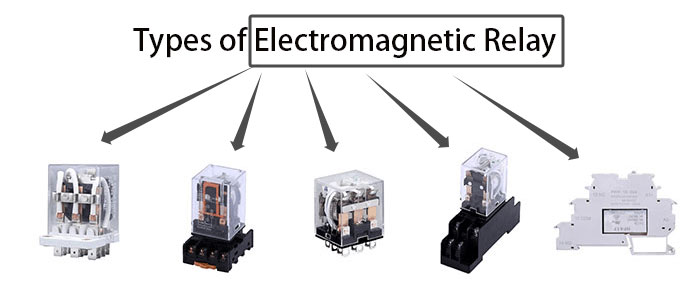Electromagnetic Relays Buying Guide
Electromagnetic relays play an integral role in both household appliances and industrial equipment. When purchasing an electromagnetic relay, there are many factors to consider to ensure that you select the right relay for your specific needs. The ATO store electromagnetic relay buying guide will provide you with detailed information on how to select, and purchase an electromagnetic relay.
Understanding the Basics of Electromagnetic Relays
Before you buy an electromagnetic relay, you first need to understand its basic principles and how the electromagnetic relay works. The core components of an electromagnetic relay include a coil, an iron core, and electrical contacts. When energized through the coil, the resulting magnetic field attracts the iron core, which changes the state of the electrical contacts, opening or closing the circuit. This is the key principle that enables high quality relays to control circuits.
Determining Requirements
Before choosing an electromagnetic relay, the specific needs need to be clear. Here are some questions that can help users clarify the particular specifications of the electromagnetic relay to be purchased.
- Current and Voltage Requirements: First, determine the current and voltage requirements in the circuit. Electromagnetic relays must be able to withstand and switch these currents and voltages to ensure safe and reliable operation.
- Circuit Type: Know the type of circuit to be controlled, such as alternating current (AC) or direct current (DC). Different types of circuits may require different types of electromagnetic relays.
- Load Type: Determine the type of load to be controlled. Some relays are suitable for normal loads, while others may need to handle specialized loads such as inductive or capacitive loads.
- Frequency of Operation: If a high-frequency switching circuit is required, make sure you select an electromagnetic relay with a fast response time.
- Environmental Conditions: Consider the application environment, including factors such as temperature, humidity, and vibration. Some EMRs may require special environmental adaptations.
- Switching Capacity: Understand the switching capacity of the EMR required in the circuit to ensure that the relay is sufficiently robust.
Selecting the Right Type of Electromagnetic Relay
Select the right type of EM Relay for your needs. Selecting the proper type of electromagnetic relay is critical to ensuring the reliability and safety of your circuit.

- DC Electromagnetic Relays: Electromagnetic relays in which the control current in the input circuit is DC current.
- AC Electromagnetic Relays: Electromagnetic relays in which the control current in the input circuit is an AC current, mainly used in industrial appliances.
- Double-pole, double-throw relays: These electromagnetic relays have two pairs of electrical contacts that can control two circuits simultaneously, and are used in applications that require multiple switching.
Brand and Quality Considerations
When purchasing electromagnetic relays, consider the reputation of the supplier and brand as well as the quality of the product. Choosing a reputable manufacturer usually provides a more reliable and durable product. In addition, check the product's certifications and compliance standards to ensure that it meets the regulatory and standard requirements in your area. Setting a budget is a critical step in purchasing an electromagnetic relay. Prices for different types and sizes of relays vary, so you need to make sure that your budget can cover your needs. Also, consider the costs associated with the relay, such as installation, maintenance, and replacement costs.
Purchasing electromagnetic relays is a critical decision as they play an important role in various applications. Selecting the proper type and size of relay, and considering your needs, environmental conditions, quality standards, and budget are key factors in ensuring a successful purchase and installation. Be sure to fully understand your needs before purchasing to ensure that you have selected the most appropriate electromagnetic relay for your application. If required, work with one of our ATO online shop professionals who can provide you with expert advice and support.

